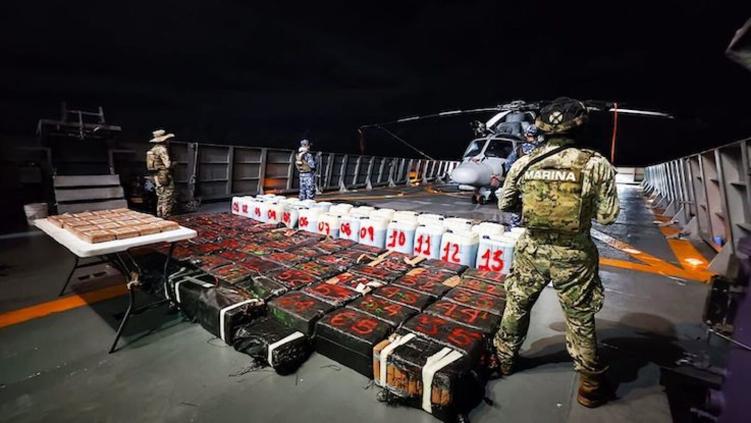Mexico — Mexico has solidified its position as the second-highest nation for cocaine seizures in the Pacific Ocean, with a total of 229 tons confiscated between 2020 and 2024, according to a report from the International Research and Analysis Center Against Maritime Drug Trafficking (CMCOM). Only Ecuador recorded more seizures during this period.
The CMCOM, which is comprised of the navies of Mexico, Colombia, Brazil, Ecuador, Guatemala, Honduras, Panama, Peru, the Dominican Republic, and the Netherlands, reported that cocaine seizures in the region doubled over the last five years, rising from 180 tons in 2020 to 351 tons in 2024.
Despite this significant increase, the organization warned that the flow of drugs in the Pacific "continues to be unstoppable," driven by record production in Colombia, Peru, and Bolivia.
International Cooperation and Key Operations
The report highlighted that international operations, such as the Operation Hammer (Martillo) led by the United States Southern Command, have been key to maritime interdiction. This initiative involves 15 countries, including Mexico, Colombia, Spain, and the United Kingdom, with the objective of detecting, monitoring, and intercepting illicit shipments crossing Pacific and Caribbean routes toward the United States and Europe.
The report underscored that Mexico increased its maritime interdiction efforts by 354% during the analyzed period, while El Salvador and Guatemala recorded increases of 722% and 1,546%, respectively. This growth reflects both greater operational effectiveness and an increase in cocaine trafficking along the coasts of Latin America's Pacific region.
Expansion of Cultivation and Trafficking Routes
The CMCOM warned that the expansion of coca crops in western Colombia, which accounts for 65% of the nation's production, is driving increased use of maritime routes toward Central America and Mexico. According to United Nations data, the potential production of cocaine in that area reached 1,732 tons in 2024, a trend that is expected to continue into 2025.
The organization recommended strengthening cooperation between South American countries, the United States, and the European Union, as well as modernizing maritime surveillance systems through satellite technology and drones. It also alerted authorities to the displacement of drug trafficking toward alternative routes in the Southern Cone—Brazil, Argentina, Uruguay, and Chile—which are currently considered lower-risk for criminal organizations.
Discover more from Riviera Maya News & Events
Subscribe to get the latest posts sent to your email.
